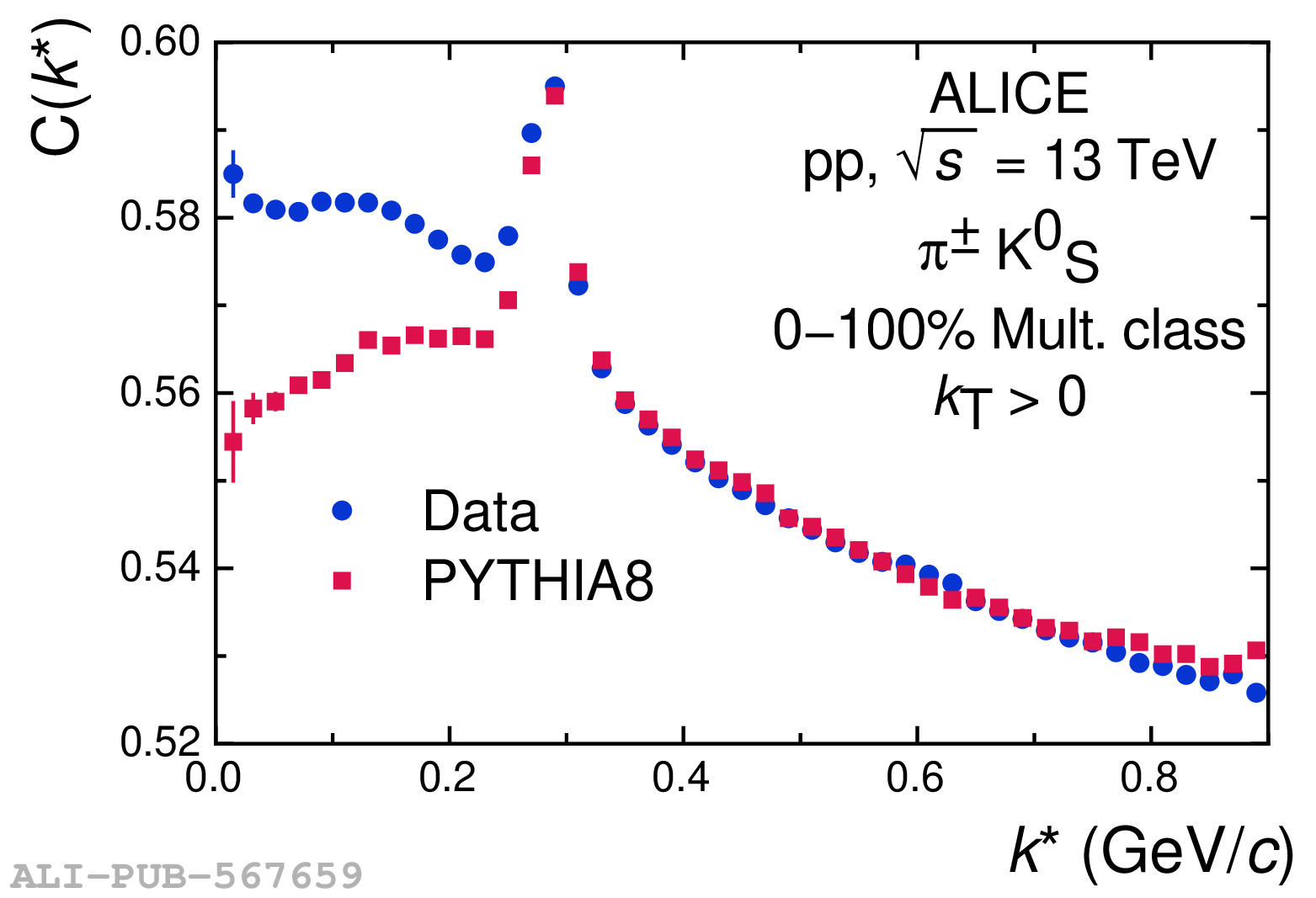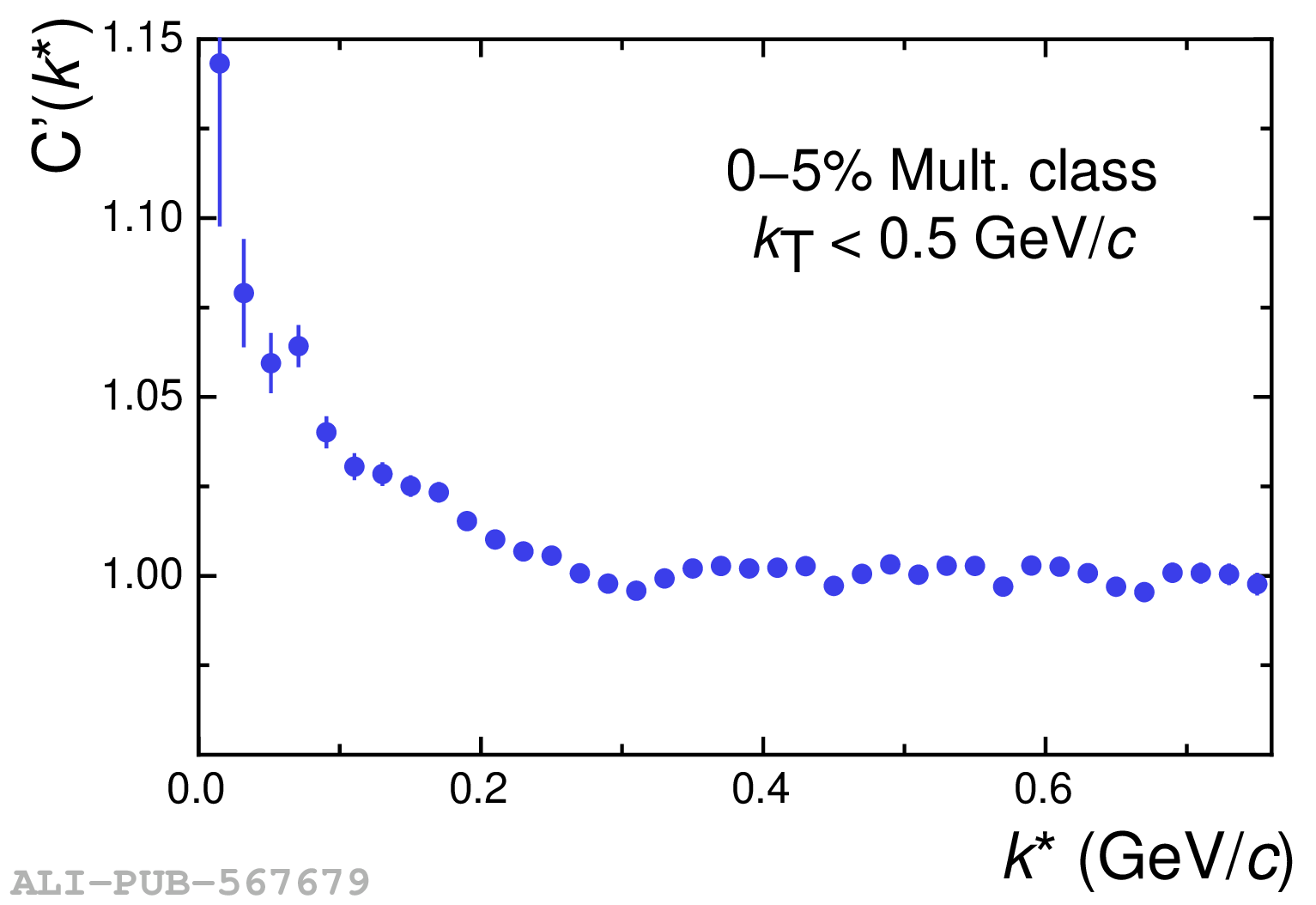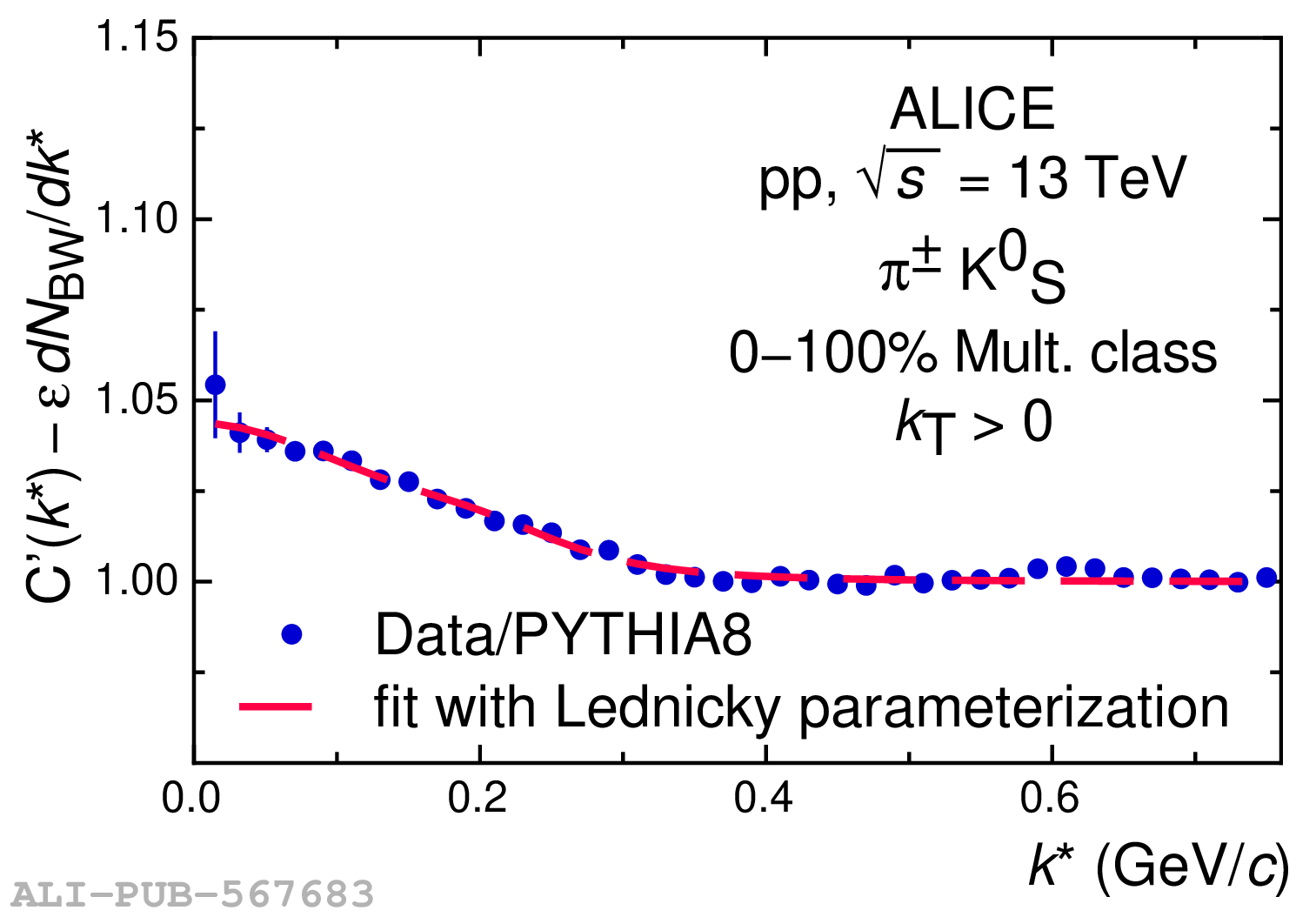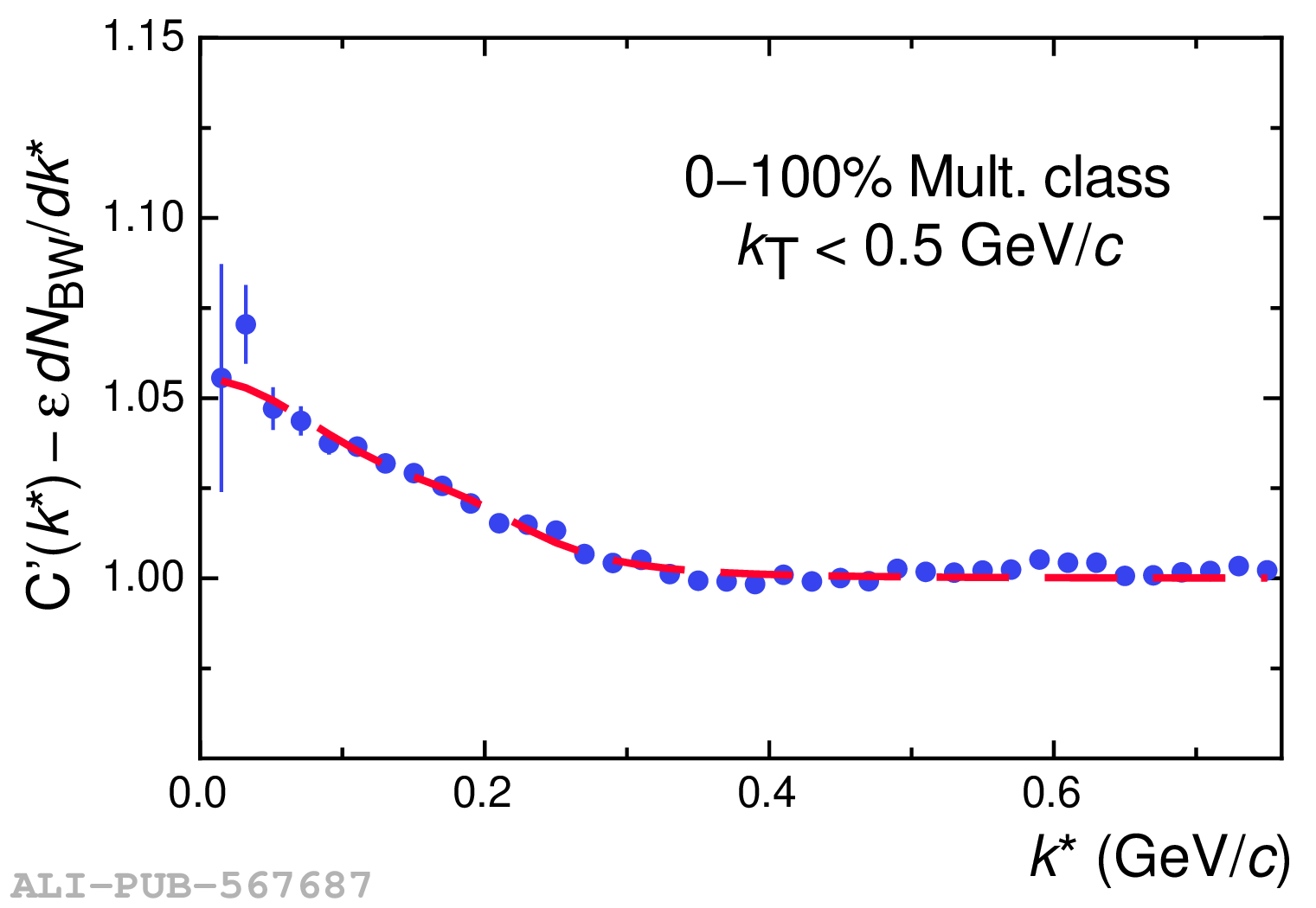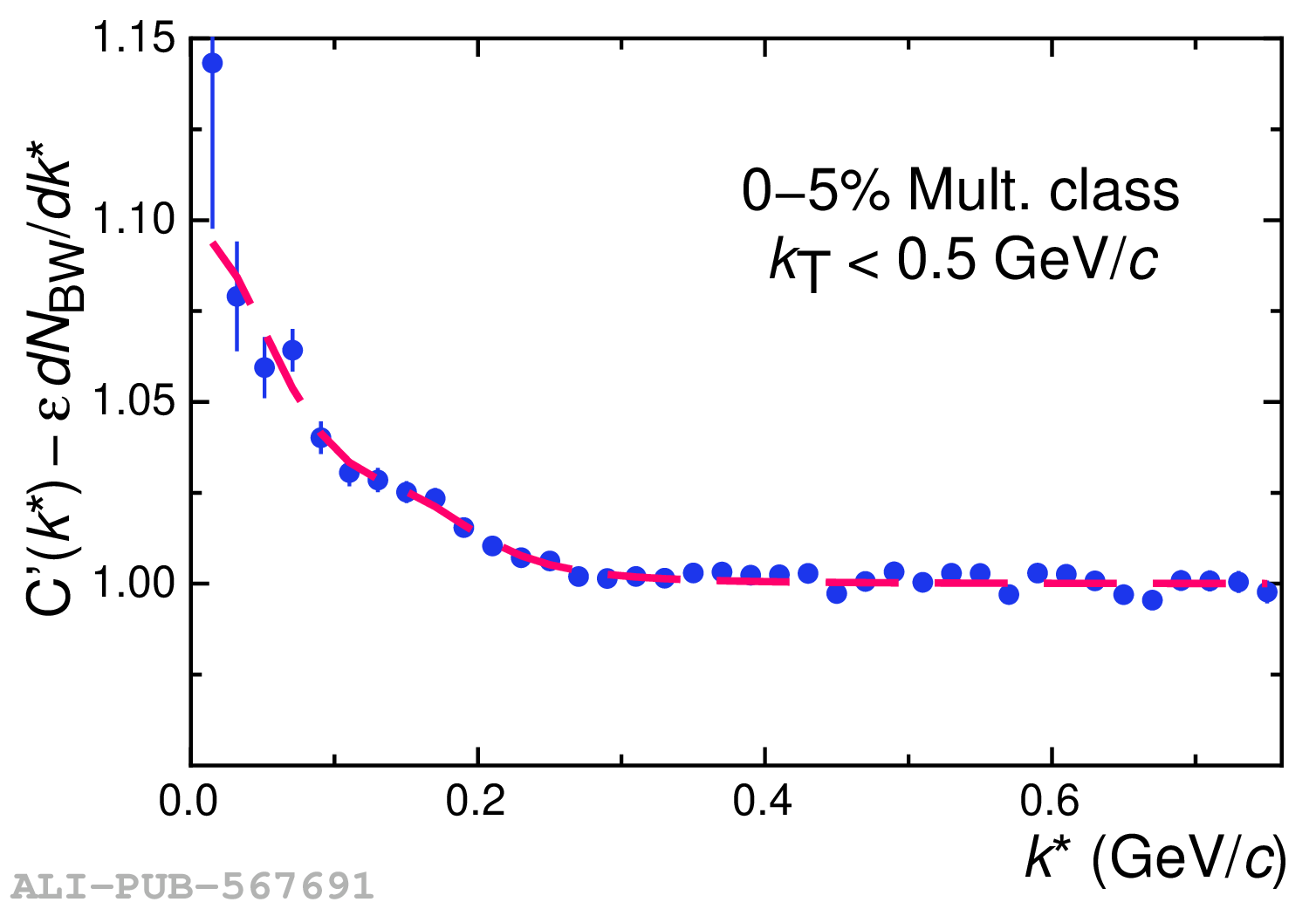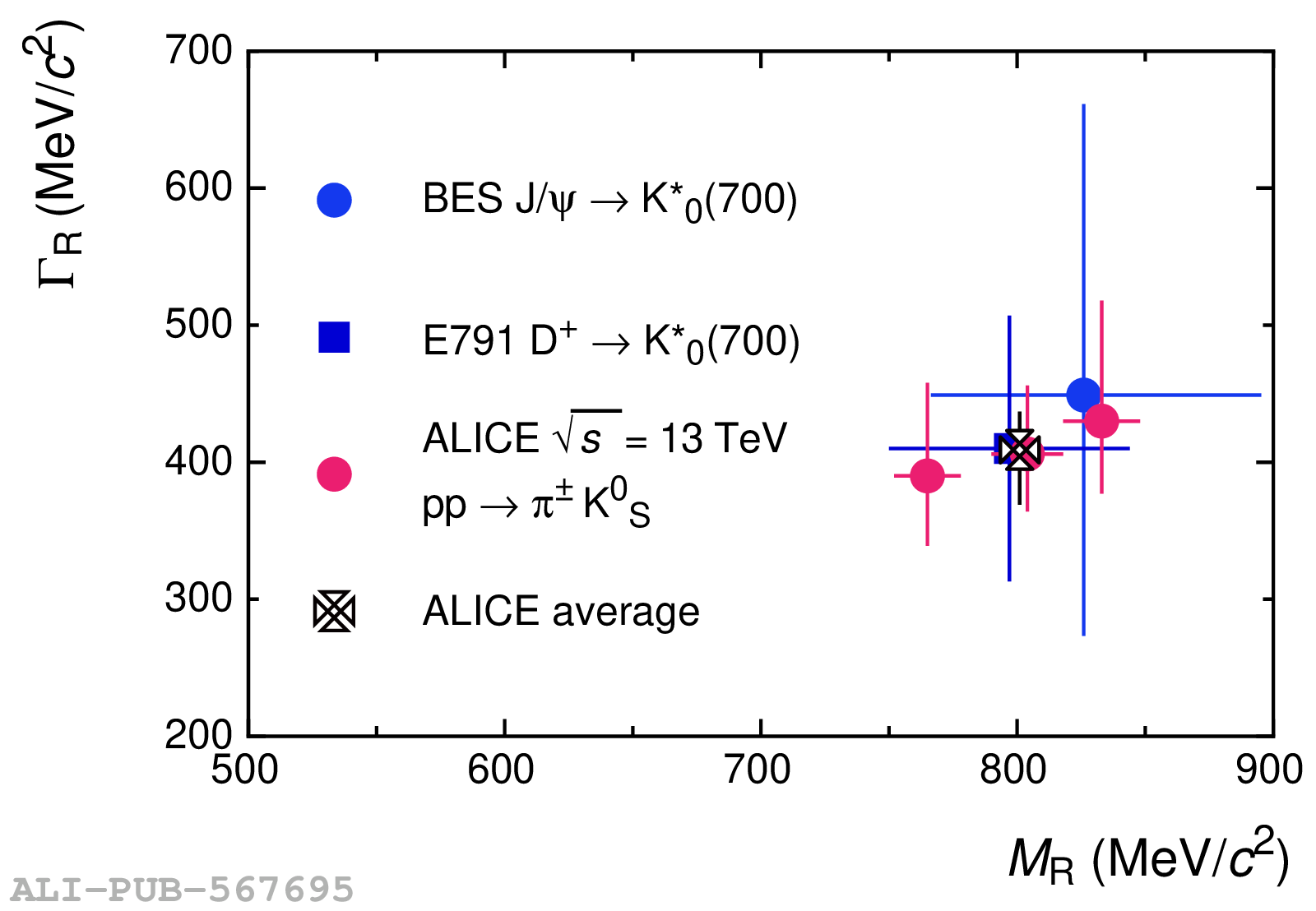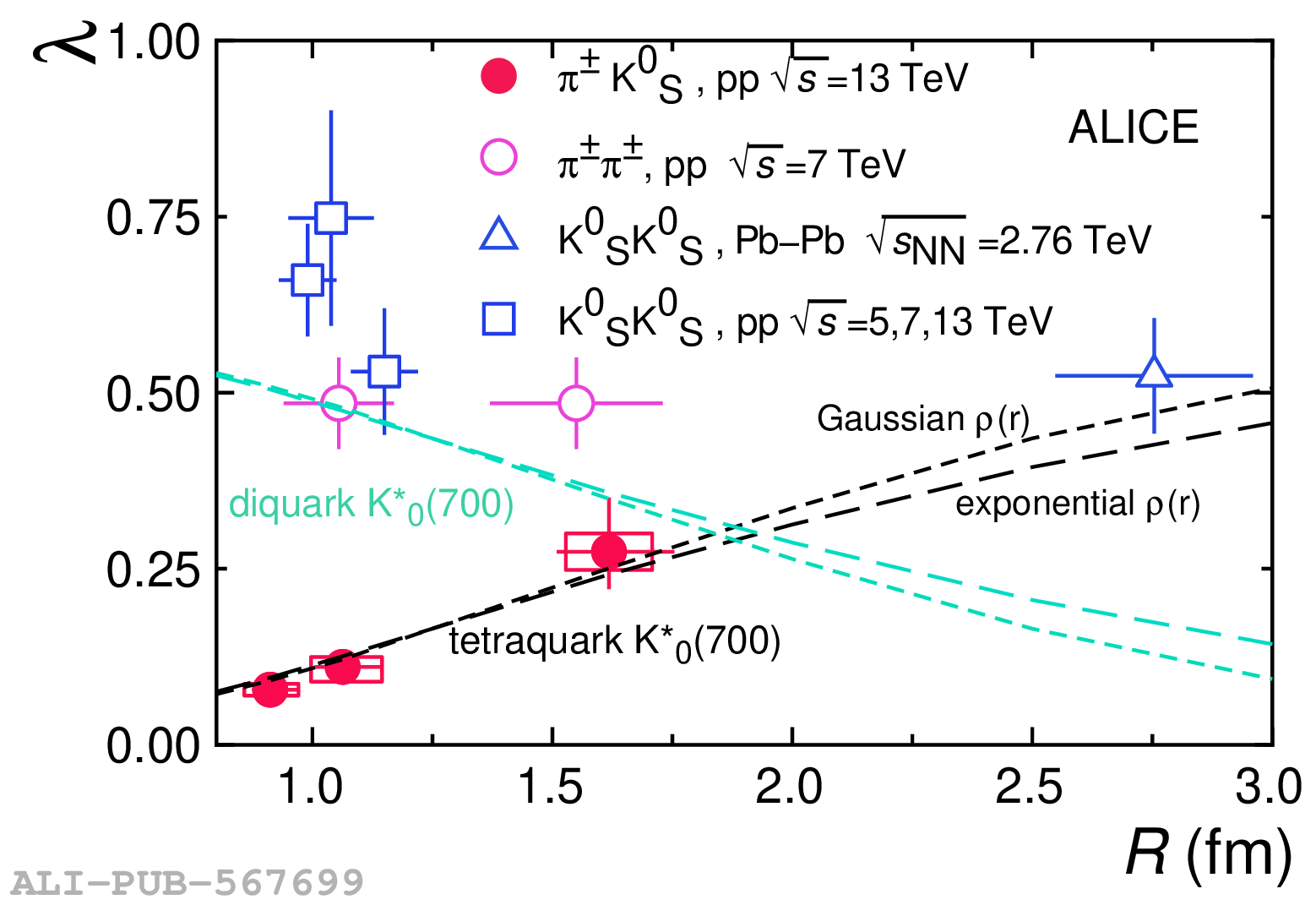The first measurements of femtoscopic correlations with the particle pair combinations $\pi^\pm$K$^0_{\rm S}$ in pp collisions at $\sqrt{s}=13$ TeV at the Large Hadron Collider (LHC) are reported by the ALICE experiment. Using the femtoscopic approach, it is shown that it is possible to study the elusive K$^*_0(700)$ particle that has been considered a tetraquark candidate for over forty years. Source and final-state interaction parameters are extracted by fitting a model assuming a Gaussian source to the experimentally measured two-particle correlation functions. The final-state interaction in the $\pi^\pm$K$^0_{\rm S}$ system is modeled through a resonant scattering amplitude, defined in terms of a mass and a coupling parameter. The extracted mass and Breit-Wigner width, derived from the coupling parameter, of the final-state interaction are found to be consistent with previous measurements of the K$^*_0(700)$. The small value and increase of the correlation strength with increasing source size support the hypothesis that the K$^*_0(700)$ is a four-quark state, i.e. a tetraquark state of the form $({\rm q_1},\overline{\rm q_2}, {\rm q_3}, \overline{\rm q_3})$ in which ${\rm q_1}$, ${\rm q_2}$, and ${\rm q_3}$ indicate the flavor of the valence quarks of the $\pi$ and K$^0_{\rm S}$. This latter trend is also confirmed via a simple geometric model that assumes a tetraquark structure of the K$^*_0(700)$ resonance.
Phys. Lett. B 856 (2024) 138915
HEP Data
e-Print: arXiv:2312.12830 | PDF | inSPIRE
CERN-EP-2023-287
Figure group

